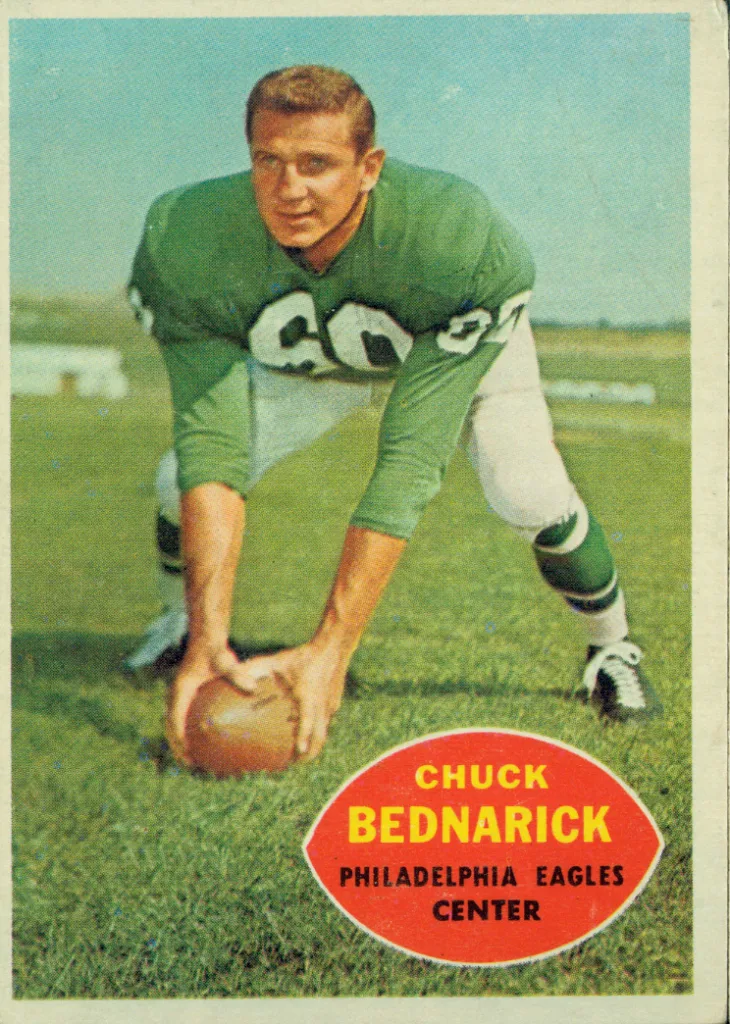
Heisman Winner is Two-Way Threat
The college football world has witnessed history as Travis Hunter claimed the Heisman Trophy, solidifying his place among the game’s legends. As a two-way player excelling as both a defensive back and wide receiver, Hunter has redefined versatility in football. His unique talents invite comparisons to NFL Hall of Famer Chuck Bednarik, the last true two-way player in professional football.

Bednarik, nicknamed “Concrete Charlie,” was known for his relentless energy as a center and linebacker for the Philadelphia Eagles from 1949 through 1962. However, the NFL’s modern demands have made two-way players nearly extinct, raising the question: What path lies ahead for Hunter, the 2024 Heisman Trophy winner? Note Hunter was also named the nation’s best defender in capturing the award named after Bednarik, and he was the best receiver in college football with his Biletnikoff Award.
If it were up to Hunter, he’d be the first two-way NFL player in generations. “I don’t want to play just one position. I want to play both ways,” he stated in an interview with Athlon Sports. While his ambition is admirable, NFL teams will likely place him on the side of the ball where his skills translate best. Not exclusively, but for the vast majority of his snaps.
On Sunday, league insider Jay Glazer reported that 12 of 13 NFL general managers told him Hunter will primarily be a cornerback. However, all told Glazer that they would find packages for him on the offensive side of the ball.

Hunter’s Heisman-winning season showcased his extraordinary athleticism and endurance. In his dual roles, he amassed jaw-dropping stats, demonstrating exceptional ball skills, instincts, and game-changing ability on both sides of the field.
NFL Draft analyst Dane Brugler of The Athletic said, “Even more impressive than Hunter’s explosive athleticism are his instinctive ball skills, which make him so productive on both sides of the ball. Aside from his physical ability and stamina, Hunter deserves a lot of credit for the mental commitment required to play both offense and defense. There’s a reason why two-way players are so rare — not only do you have to be a super-athlete, but staying locked in on the mental side is taxing, as well.”
Despite Hunter’s success, NFL scouts and analysts agree that maintaining dual roles at the professional level is nearly impossible. The physical toll of playing both offense and defense is demanding over a grueling 17-game NFL season, which is about 40% longer than the college season. The level of competition is so much higher than in college that it demands specialization and a single-minded focus to master one position.
Scouting reports reveal teams’ dilemma in choosing one primary position for the expected No. 1 overall NFL Draft pick. The Draft Network describes Hunter as an elite cornerback prospect with “incredible fluidity, elite change-of-direction skills, and the ability to anticipate routes with precision.” On the other hand, his wide receiver profile highlights his “explosive acceleration, remarkable hands and ability to stretch the field,” making him a game-changer on offense.
Hunter’s future as a wide receiver is particularly enticing for card collectors and hobbyists. Offensive players tend to garner more attention and higher card values due to their visibility and statistical impact. After quarterbacks, receivers drive the hobby of football card collecting. The best cornerbacks are rarely seen on Sundays since teams are afraid to throw the ball anywhere near them.
If Hunter is a primary cornerback, collectors will have the upside that he will probably play just enough wide receiver to be considered a unicorn in the league. This will make his trading cards some of the most sought-after in the industry.